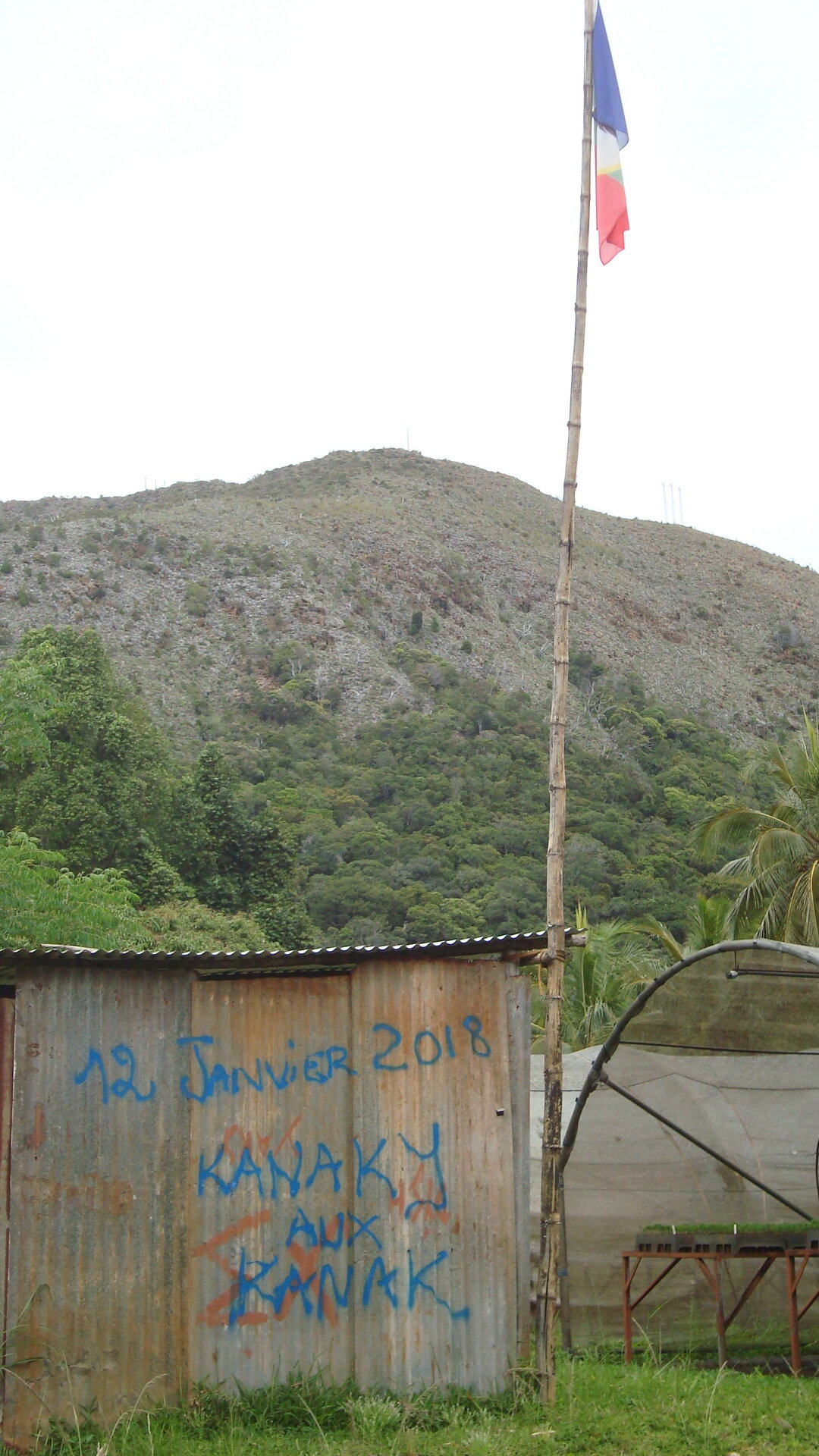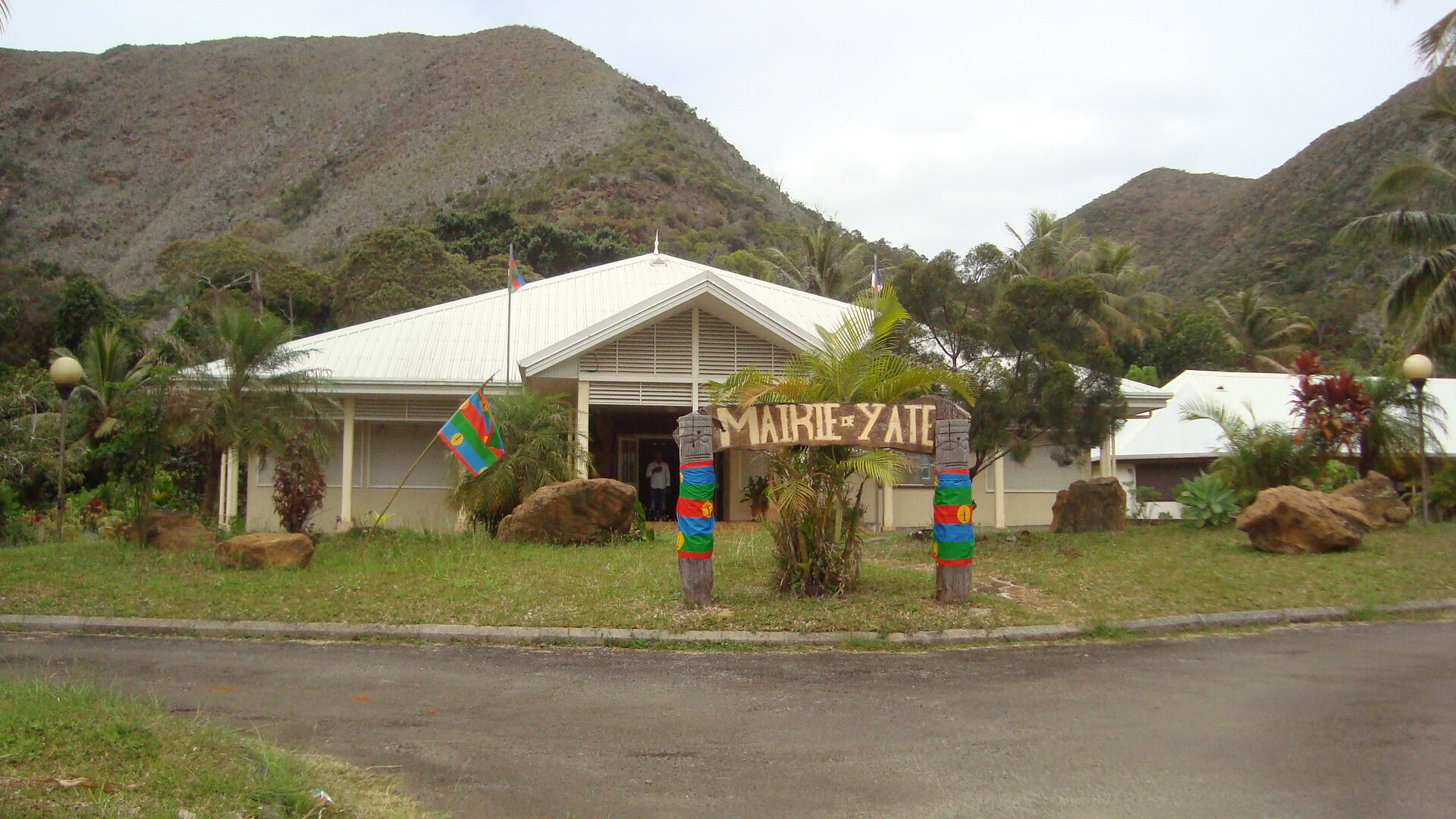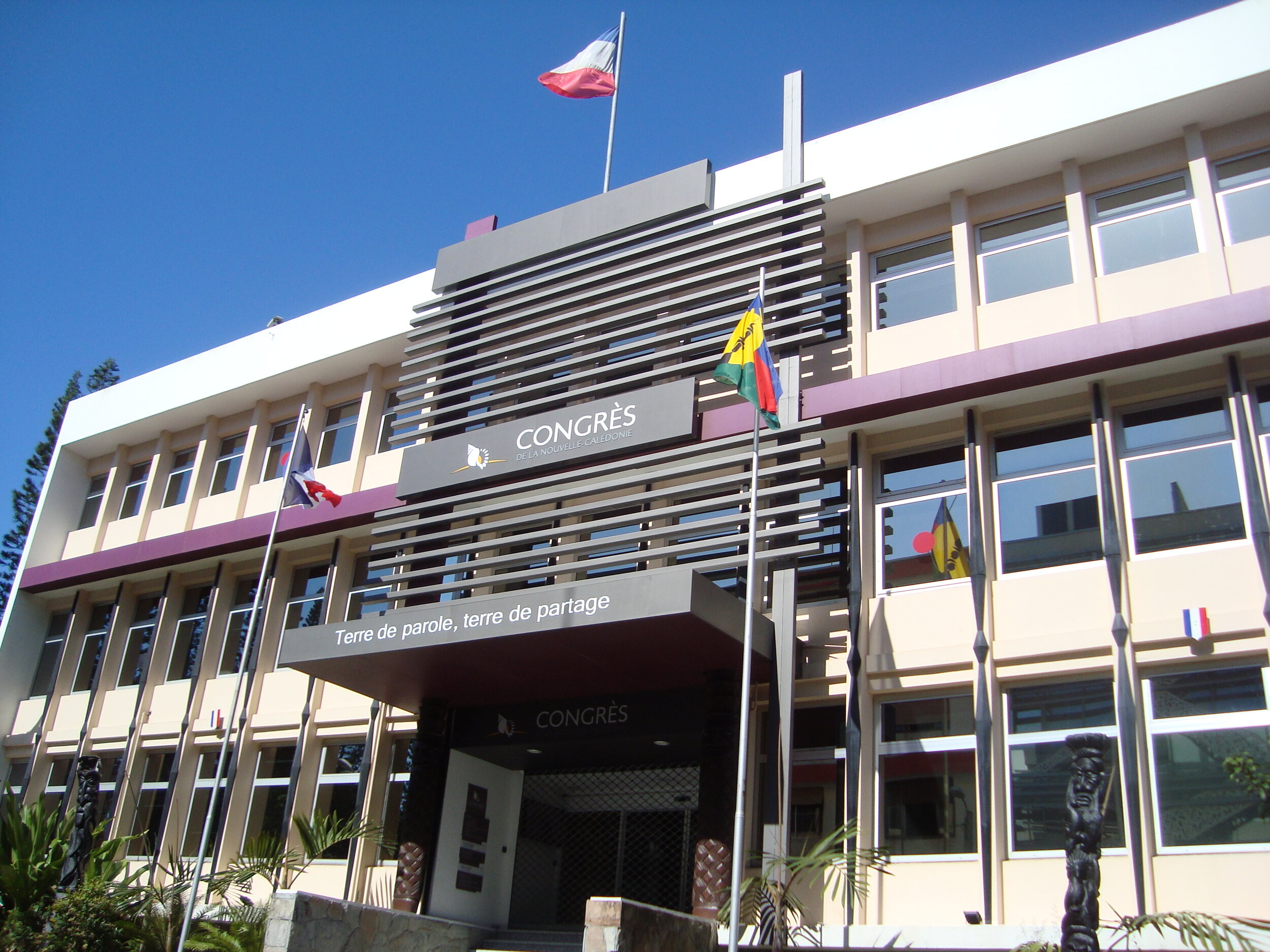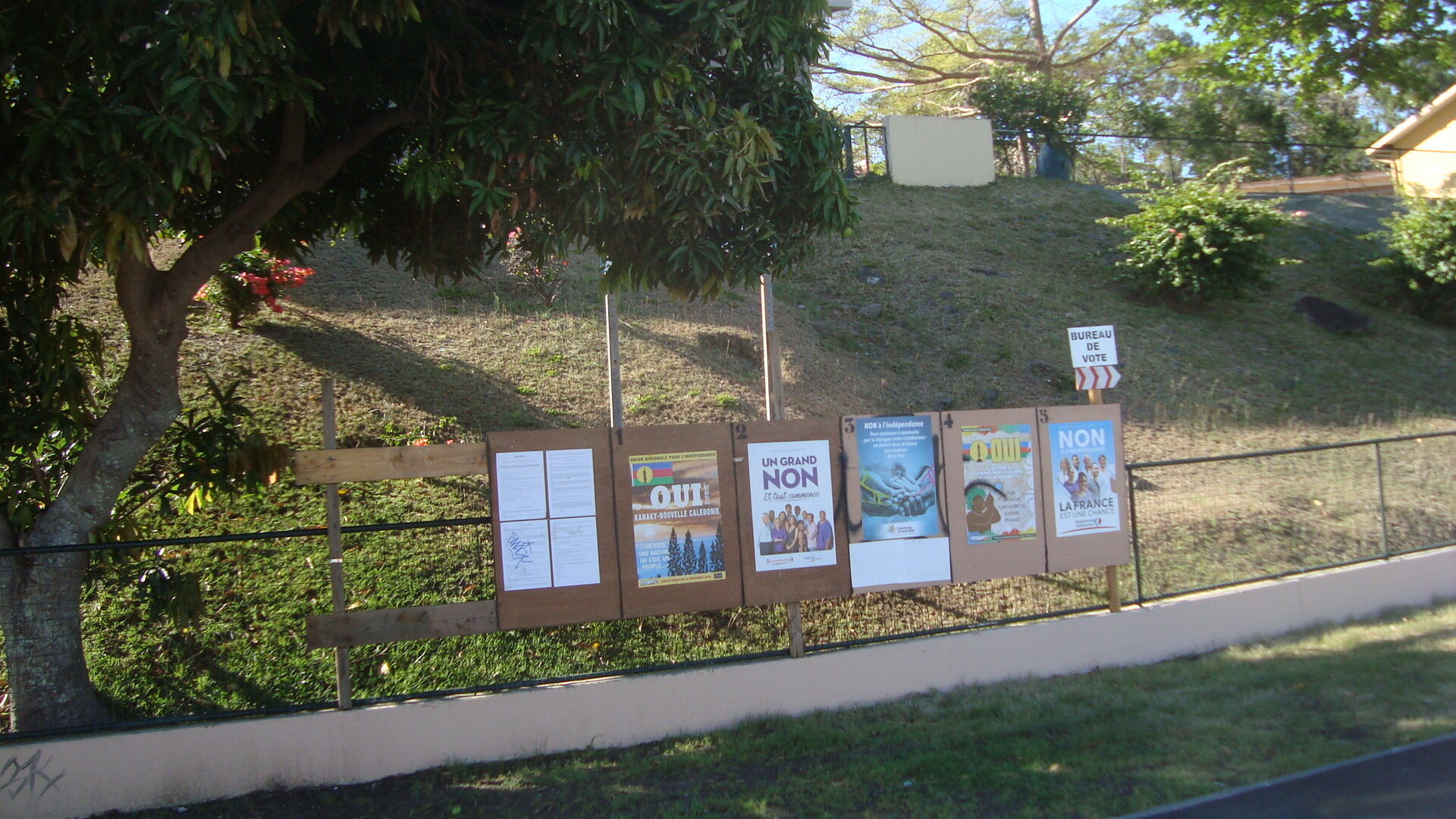New Caledonia Rejects Once Again Full Independence, but the Die Is Not Yet Entirely Cast
/Elisabeth Alber
Institute for Comparative Federalism, EURAC Research
On Sunday 4 October 2020, in the French Pacific territory of New Caledonia, out of 180,799 registered voters in the special electoral roll (la liste électorale spéciale pour la consultation sur l’accession de la Nouvelle-Calédonie à la pleine souveraineté), 81,503 said ‘No’ to getting full independence from France (equaling 53.26 per cent) and 71,533 answered ‘Yes’ when asked “Do you want New Caledonia to accede to full sovereignty and become independent?” (equaling 46.74 per cent), with 154,918 voters and 153,036 valid votes cast (official results here). New Caledonia is located almost 2000 km east of Sydney, Australia and is composed of a principal island and smaller ones of around 18,500 km².
The question posed was the same as in the first independence referendum held on 4 November 2018. Though, the margin in the results of the second independence referendum in a series of three possible ones was narrower than the one in the first independence referendum. In 2018, out of 174,165 registered voters in the special electoral roll, 78,734 voted ‘No’ (equaling 56.67 per cent) and 60,199 voted ‘Yes’ (equaling 43.33 per cent), with 141,099 voters and 138,933 valid votes cast (official results here).
The turnout in the 2020 independence referendum (85.69 per cent) was even higher than the one in the first independence referendum held in 2018 (81.01 per cent). The number of registered voters, back in 2018, was lower (174,165 instead of 180,799) because of changes in demography, i.e. persons not being of voting age back then. At this stage, it must be noted that the increased numbers of voters in the second (and in a possible third) independence referendum, however, do not suggest a big enough cohort to really shift the results.
When looking at the spread of the ‘Yes/No’ vote across the territory in the 2020 independence referendum, the South Province located southwest on New Caledonia’s main island, with its capital Nouméa, to a large extent voted ‘No’ (70.86 per cent), while the rest of New Caledonia, the less populated North Province located on the main island and the Islands of Loyalty that form the third Province of New Caledonia’s second tier of government, to a large extent voted ‘Yes’ (respectively 78.34 and 84.27 per cent). This distribution of the votes aligns with the distribution of the Kanak, the indigenous population of New Caledonia, even though it cannot be assumed that all Kanaks are pro-independentists and all non-Kanaks are loyalists.
The 2020 independence referendum was re-scheduled from 6 September because of the coronavirus pandemic. This caused major discontent within the pro-independent camp. They claimed that the imposition of the Coronavirus policy to New Caledonia by continental France was in breach with New Caledonia’s autonomy that grants the archipelago the competence in the fields of social protection, public health and hygiene, and sanitary control to its borders (New Caledonia up to date has only very few infections cases, and no deaths, not least because it applies severe policies as to incomers and quarantine measures).
Both the first and the second independence referendums are the outcome of a 30 plus years-long partially violent but generally carefully negotiated process of gradual decolonization (New Caledonia is on the UN list of non-self-governing territories). New Caledonia was a colony of France between 1853 and 1946 (used as a penal colony). After World War II, it became an overseas territory (territoire d’outre-mer) with French citizenship granted to all Kanaks, the islands’ indigenous population, in 1957. The Kanak today make up 39 per cent of New Caledonia’s population. As of the 2019 census, New Caledonia hosts 271,407 inhabitants and, next to the 39 per cent of self-declared Kanaks, there are 27 per cent ‘Europeans’. The rest of the population is composed of inhabitants of different ethnicities than Kanak, mainly originating from nearby Pacific islands, and South-East Asia (data refers to the 2014 census).
Constitutionally, New Caledonia enjoys significant autonomy. From an economic viewpoint, it relies on subsidies from France that annually, in ordinary times, make up approximately 15 per cent of its GDP. The French Constitution in its ‘Title XIII – Transitional provisions pertaining to New Caledonia (articles 76 and 77)’ grants the archipelago the right to self-determination and a larger scope of autonomy than the other French overseas territories.
Under the 1998 Nouméa Accord, and the 1999 Loi organique (organic law) that implements it, New Caledonia became an overseas collectivity, with mainland France only retaining competences in the fields of currency, defense, foreign affairs, justice and public order. Politically, New Caledonia has its own assembly and government, with a power-sharing executive that in a proportional manner includes the parties present in the assembly. Legislation affecting the interests of the Kanak also needs to be ratified by a 16-members Kanak Customary Senate (two members from each of the eight customary areas).
The Charter of the Kanak People, adopted in April 2014 by Kanak customary authorities, grounds the conflictual but overall peaceful co-habitation between the Kanak population (made up of more than 300 tribes speaking more than 30 languages including dialect variations) and the descendants of European settlers on the principle of ‘cooperative and balanced legal pluralism’ (Preamble, 11). Accordingly, customary law is to be applied by the authorities regarding civil matters about the cultural autonomy of the Kanak.
If one wants to understand the choice and the rationale of New Caledonia’s series of independence referendums (2018, 2020 and, most probably, 2022) and the (political) tensions connected to it, it is necessary to take a brief look back. Following violence between the Kanak independentists and French authorities in the 1980s, the Matignon-Oudinot Accord in 1988 foresaw an independence referendum to be held after a 10-year period in which especially the Kanak population ought to profit from socio-economic development. In a France-wide (sic!) held referendum on 6 November 1988 (with 38,025,823 registered voters and 14,028,705 voters), out of 12,371,046 valid votes 9,896,498 voted ‘Yes’ when asked “Do you agree to allow New Caledonian residents to vote for self-determination in 1998?”. In percentage, this Agreement got approved by 80 per cent of the valid votes cast with a turnout of only 36.9) (official results here). In New Caledonia, 57 per cent voted ‘Yes’ and the turnout was 62.4 per cent (in numbers: 29,285 ‘Yes’ votes and 22,062 ‘No’ votes with the ‘Yes’ votes mainly concentrated in areas inhabited by the Kanaks).
By signing the Nouméa Accord in 1998, both sides – the independentists and the loyalists – agreed to postpone the independence referendum planned for 1998 to 2018 at the latest. On 8 November of the same year, only New Caledonian voters approved this Agreement in a referendum by 71.86 per cent (equaling 55,400 ‘Yes’ votes against 21,697 ‘No’ votes). The turnout was 74.23 per cent and, out of 106,698 registered voters, 79,202 cast a vote and 77,097 of the votes cast were valid. The Nouméa Agreement provides for up to three votes in the event of a ‘No’ vote in the independence referendum. In part 5, it specifies that if independence is rejected in the first referendum, there is an option for another referendum so long as the poll is requested by at least a third of the members of the assembly of New Caledonia. Shall independence be rejected in the second referendum too, then there is also an option for a third one, always to be requested by a vote in the Congrès de la Nouvelle Calédonie.
Even though in both the first and second independence referendum the ‘No’ vote was expected to win over the ‘Yes’ vote, the real issue of the series of independence referendums was to figure out how much of a lead the ‘No’ vote would have over the ‘Yes’ vote. Polls back in 2018 predicted a clear victory of the ‘No’ vote, while for the 2020 no polls were available, and it is yet to be seen if the assembly calls for a third vote in 2022 and, if yes, how narrow its results will be. In the 2018 vote, polls were wrong. The result was much closer than expected. Considering the results of the 2020 independence referendum, i.e. the even narrower margin between the ‘No’ and the ‘Yes’ vote compared to 2018, the uneasy peacemaking process cannot but continue after the 2020 vote. The current strength of pro- and anti-independentists political forces in the assembly validate this argument.
The outcome of the last provincial elections in May 2019, held under a proportional representation system to guarantee New Caledonia a power-sharing system according to Arend Lijphart’s consociationalism, have led to a reconfiguration on the loyalist side. On the other side, pro-independence parties still hold 26 seats in the assembly made of 54 members. Moreover, the 28 seats of the anti-independence forces include 7 seats of two political groupings in which some politicians openly back up the pro-independence cause. The 54 members of the assembly (Congrès de la Nouvelle Calédonie) located in Nouméa serve a five-year term and are elected proportionally based on the partisan composition of the assemblies of the three Provinces of New Caledonia.
Considering the political tensions, the 2020 referendum is unlikely to put an end to the issue of the constitutional arrangements of New Caledonia, and the position of the Kanak. The possible territorial solutions of New Caledonia’s future continue to be threefold: first, become a fully independent state; second, remain an overseas collectivity preserving the status quo and trying to further enhance its scope of autonomy; third, aim at becoming a self-governing state that is freely associated with France (an option that is not really debated but a frequent practice in place in many self-governing islands in Oceania: for example, the Cook Islands are self-governing in free association with New Zealand, while Palau and the Marshall Islands are independent states under a Compact of Free Association with the US).
Doubtlessly, as elsewhere, in the case of New Caledonia, time has been conducive to peace, but each vote lays bare the many remaining inequalities between European descendants and Kanaks or, expressed differently, it bluntly shows how difficult it is to reconcile a (perceived) colonial reality with economic pragmatism.
In short, in New Caledonia the territorial question is by no means settled. Sovereignty might, after all, not be a binary concept. As aptly put by the pro-independentist Kanak leader Jean-Marie Tjibaou, assassinated on 4 May 1989 by another Kanak, “Sovereignty means the right to choose one’s partners. For a small country like ours, independence means working out interdependency” (cited here, at 377). Conversely, from a conceptual viewpoint, the ability of referendums to sustain peace in the absence of broad-based internal reconciliation processes remains doubtful.
Elisabeth Alber is a Senior Researcher, Institute for Comparative Federalism, EURAC Research, Bolzano/Bozen.
Suggested citation: Elisabeth Alber, ‘New Caledonia Rejects Once Again Full Independence, but the Die Is Not Yet Entirely Cast’ IACL-AIDC Blog (6 October 2020), https://blog-iacl-aidc.org/2020-posts/2020/10/6/new-caledonia-rejects-once-again-full-independence-but-the-die-is-not-yet-entirely-cast











![Xx1088_-_Seoul_city_nightscape_during_1988_Paralympics_-_3b_-_Scan [test].jpg](https://images.squarespace-cdn.com/content/v1/5af3f84a4eddec846552ea29/1527486925632-3VZP3ASLAHP1LJI0D9NJ/Xx1088_-_Seoul_city_nightscape_during_1988_Paralympics_-_3b_-_Scan+%5Btest%5D.jpg)
